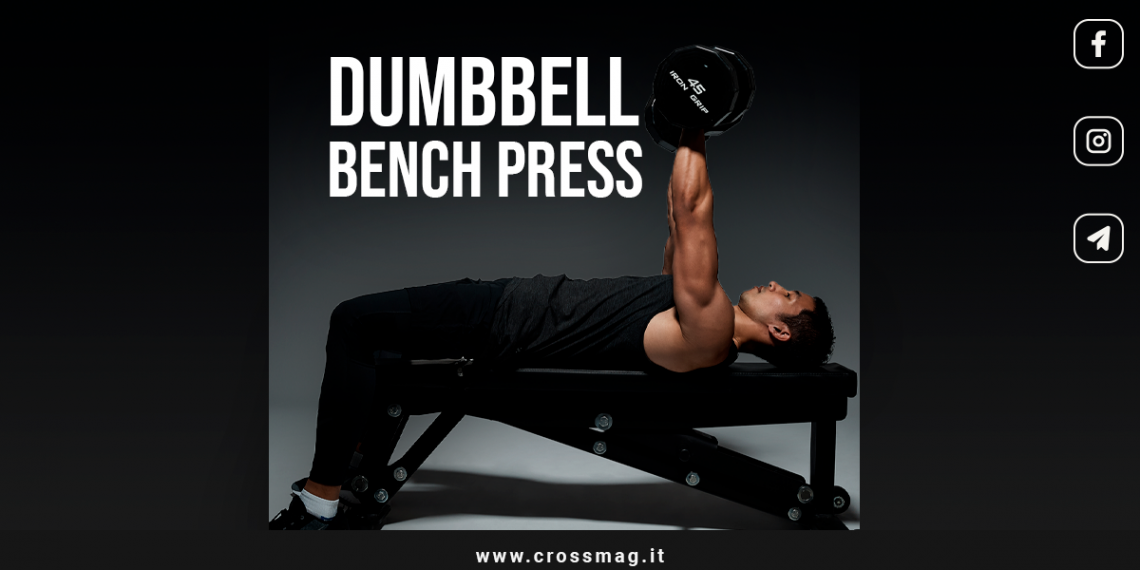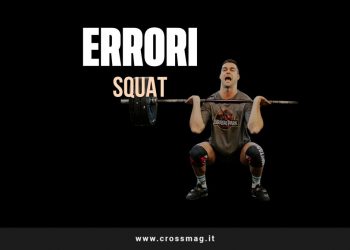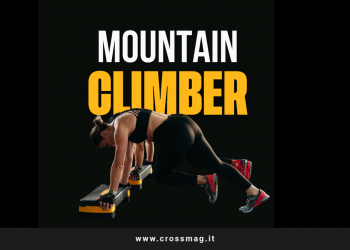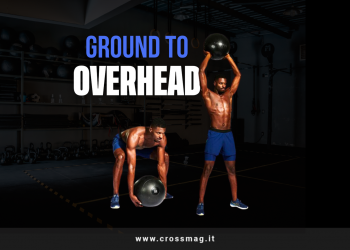La dumbbell bench press, or bench press with dumbbells, is one of the best exercises to strengthen the upper body and make it work pectorals, deltoids and triceps; for best results and maximum safety, it is essential use proper technique and have good form.
Let's find out how to do the dumbbell bench press the muscles it involves and all its benefits!
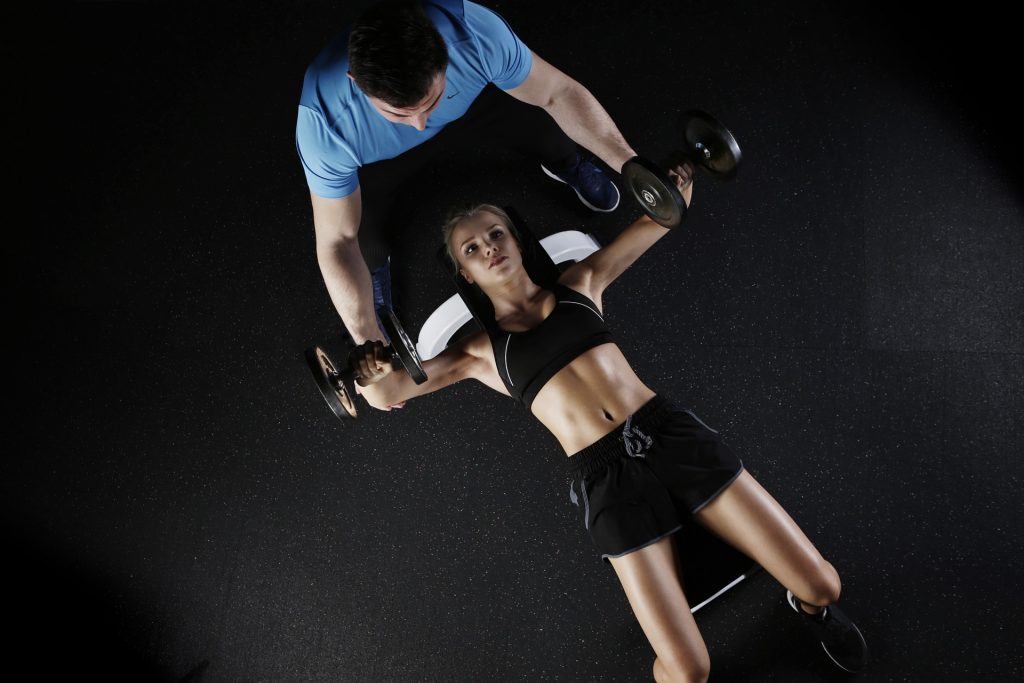
Index
Performing dumbbell bench press
Performing this exercise is quite simple:
- lie down on a bench with your back in good contact with the backrest
- take two dumbbells, one in each hand, and bring them to the height of the sternum at a distance between them slightly greater than shoulder width (palms facing upwards and the dumbbells parallel to the ground)
- lift the dumbbells straight up until your elbows are straight and the dumbbells are close together
- in the descent phase the elbows must go backwards to allow the shoulder blades to approach and work the pectorals
- while lifting the dumbbells, exhale, while descending, inhale.
Benefits
The dumbbell bench press is a unilateral movement that helps improve form and correct muscle imbalances; by comparison, the barbell may work the chest harder to one side than the other, while the dumbbell bench press corrects for this error.
The use of the handlebar also allows you to perform a more movements than the barbell press; this, in turn, allows for a greater stretch of the muscle and better contraction at the top of the movement.
The exercise also engages the stabilizer muscles and as a result, recruit and activate more muscle fibers; working with dumbbells allows for rotation of the wrist and free movement of the elbows and arms, making the exercise less stressful on the joints.
Dumbbell bench press: muscles involved
This exercise recruits several muscles:
- pectoralis major (the largest muscle in the chest)
- anterior deltoids (front muscles of the shoulder
- lateral deltoids
- triceps
- rotator cuff (a small group of muscles responsible for stabilizing the shoulder).
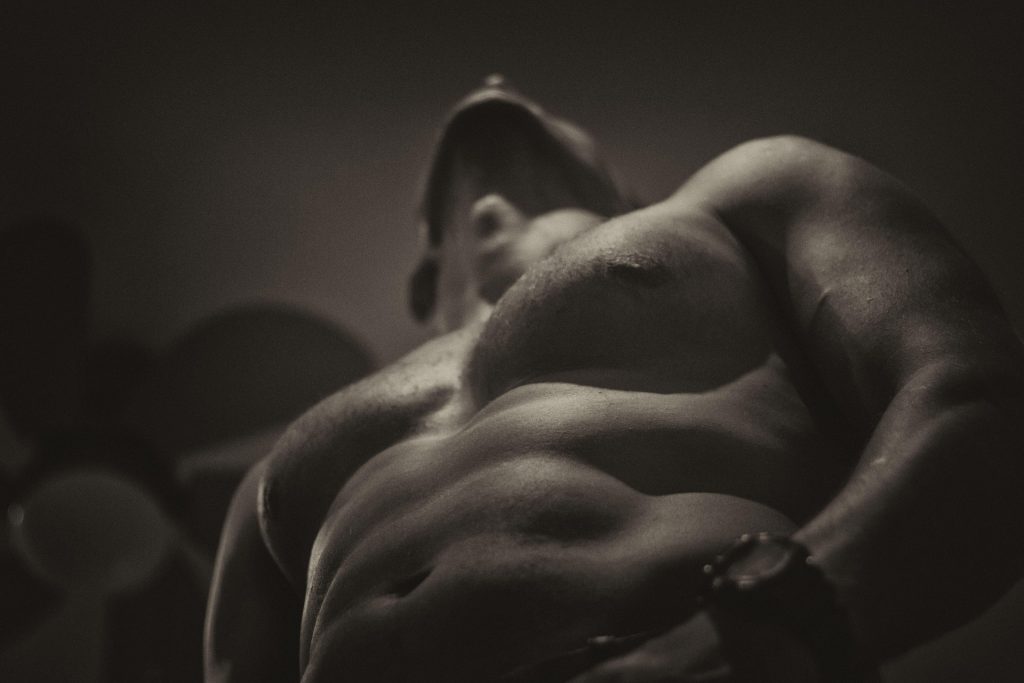
Errors to avoid
Let's see the most common mistakes when performing dumbbell bench presses:
- Handlebars Touching: at the top of the movement, don't let the dumbbells collide as this can cause instability in the shoulder
- weight too heavy: you can't use the same load that maybe you use with the barbell; too heavy dumbbells in bench presses increase the risk of shoulder injuries and limit the range of motion of the exercise
- arch your back: Arching your back helps during the downward phase of the exercise, but takes away the focus from activating the target pectoral muscles.
Dumbbell bench press variations
Esistono due varianti di questo esercizio; nella prima cambia l’inclinazione della panca, nella seconda si cambia la pinch (made with three fingers) dei manubri:
- dumbbell bench press on incline bench: you sit on a bench with an inclination ranging from 20 to 45 degrees; this variant focuses more on the upper part of the chest compared to the flat bench
- palms facing each other: in this variation, the dumbbells are held with the palms facing each other instead of facing the feet; in this way, the triceps are more involved.
And you, do you perform this exercise in your training routine? Let us know in the comments and remember to follow us on our telegram channel

